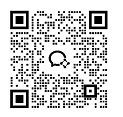How Do You Maintain a Cylindrical Roller Thrust Bearing?
Cylindrical roller thrust bearings are crucial components in various industrial applications, designed to handle heavy axial loads while providing reliable performance under demanding conditions. Proper maintenance of these bearings is essential for ensuring optimal operation, extending service life, and preventing costly equipment failures. This comprehensive guide explores the key aspects of cylindrical roller thrust bearing maintenance, providing valuable insights for engineers and maintenance professionals.

What are the essential inspection procedures for Cylindrical Roller Thrust Bearings?
Visual Inspection Techniques
Regular visual inspection of cylindrical roller thrust bearings is fundamental to maintaining their operational integrity. When examining these bearings, technicians should focus on identifying signs of wear, damage, or deterioration on the bearing surfaces. The inspection should include careful examination of the roller elements, raceways, and cage condition. Cylindrical roller thrust bearings often show early warning signs through visible wear patterns, and early detection can prevent catastrophic failures. Technicians should look for discoloration, which might indicate overheating or lubricant breakdown, and check for any debris or contamination that could compromise bearing performance. Additionally, the cage should be inspected for any deformation or cracking, as cage failure can lead to severe bearing damage.
Measuring Bearing Wear
Accurate measurement of cylindrical roller thrust bearing wear is crucial for determining their operational condition. Using precision measuring tools such as micrometers, dial indicators, and specialized bearing gauges, technicians can assess the bearing's dimensional accuracy and wear patterns. The measurement process should include checking the roller diameter, raceway flatness, and overall bearing thickness. For cylindrical roller thrust bearings, particular attention should be paid to the axial clearance, as changes in this parameter can significantly affect bearing performance. Regular measurements help establish wear trends and enable predictive maintenance scheduling, ultimately preventing unexpected failures.
Monitoring Operating Parameters
Continuous monitoring of operating parameters is essential for maintaining cylindrical roller thrust bearings in optimal condition. Key parameters include temperature, vibration levels, and noise characteristics. Modern monitoring systems can provide real-time data on bearing performance, allowing for early detection of potential issues. Temperature monitoring is particularly crucial for cylindrical roller thrust bearings, as excessive heat generation can indicate problems with lubrication, loading, or alignment. Vibration analysis can reveal issues such as roller defects, cage problems, or misalignment, while unusual noise patterns may indicate developing bearing problems that require attention.
What are the best lubrication practices for Cylindrical Roller Thrust Bearings?
Selection of Appropriate Lubricants
Choosing the right lubricant for cylindrical roller thrust bearings is critical for ensuring optimal performance and longevity. The selection process must consider factors such as operating speed, load conditions, temperature range, and environmental factors. High-quality lubricants specifically formulated for thrust bearings should be used, as these products provide superior protection against wear and maintain their properties under heavy loads. When selecting lubricants for cylindrical roller thrust bearings, considerations should include the base oil viscosity, additive package, and temperature stability. The lubricant must maintain adequate film thickness under operating conditions while providing effective protection against corrosion and wear.
Lubrication Schedules and Methods
Implementing proper lubrication schedules and methods is crucial for maintaining cylindrical roller thrust bearings. The frequency of lubrication depends on operating conditions, environment, and bearing size. Automated lubrication systems can ensure consistent and accurate lubricant delivery, while manual lubrication requires careful attention to quantity and timing. For cylindrical roller thrust bearings, it's essential to avoid both under-lubrication and over-lubrication, as both conditions can lead to bearing failure. Regular monitoring of lubricant condition through oil analysis can help optimize lubrication intervals and detect potential problems before they cause bearing damage.
Contamination Control
Maintaining lubricant cleanliness is essential for protecting cylindrical roller thrust bearings from premature wear and failure. Effective contamination control measures include proper sealing, regular filter maintenance, and careful handling procedures during lubrication. The presence of contaminants in the lubricant can accelerate wear and reduce bearing life significantly. For cylindrical roller thrust bearings, particular attention should be paid to preventing water contamination and ingress of foreign particles. Implementation of proper storage procedures for lubricants, regular oil analysis, and maintenance of sealing systems are crucial aspects of contamination control.
How do you properly install and align Cylindrical Roller Thrust Bearings?
Pre-installation Preparation
Proper preparation before installing cylindrical roller thrust bearings is crucial for ensuring optimal performance and longevity. This includes cleaning and inspection of all related components, verification of shaft and housing dimensions, and preparation of necessary tools and equipment. When working with cylindrical roller thrust bearings, special attention must be paid to the cleanliness of the mounting surfaces and surrounding area. The preparation phase should include verification of shaft roundness and straightness, housing bore dimensions, and surface finish quality. Additionally, all required mounting tools should be cleaned and checked for proper condition to avoid damaging the bearing during installation.
Installation Techniques
Correct installation procedures are essential for the proper functioning of cylindrical roller thrust bearings. The process requires careful handling, proper alignment, and the use of appropriate mounting tools and techniques. During installation, technicians must ensure that the bearing is mounted square to the shaft and that proper preload or clearance is achieved. For cylindrical roller thrust bearings, particular attention should be paid to the mounting surface preparation and the use of proper mounting forces. The installation process should follow manufacturer specifications regarding mounting methods, heating requirements for interference fits, and proper tightening sequences for mounting hardware.
Alignment Verification
Post-installation alignment verification is critical for ensuring optimal performance of cylindrical roller thrust bearings. This includes checking for proper seating, measuring runout, and verifying correct clearances or preload. Proper alignment is crucial for cylindrical roller thrust bearings as misalignment can lead to uneven loading and premature failure. The verification process should include measurements of shaft runout, housing alignment, and bearing positioning. Advanced alignment tools such as laser alignment systems can be used to ensure precise positioning, while dial indicators can verify proper mounting and running characteristics.
Conclusion
Proper maintenance of cylindrical roller thrust bearings is crucial for ensuring optimal performance and longevity in industrial applications. Through systematic inspection procedures, appropriate lubrication practices, and correct installation techniques, organizations can maximize bearing life and minimize downtime. Regular monitoring and preventive maintenance are essential components of an effective bearing maintenance program, helping to ensure reliable operation and prevent costly failures.
Luoyang Huigong Bearing Technology Co., Ltd. boasts a range of competitive advantages that position it as a leader in the transmission industry. Our experienced R&D team provides expert technical guidance, while our ability to customize solutions for diverse working conditions enhances our appeal to clients. With 30 years of industry-related experience and partnerships with numerous large enterprises, we leverage advanced production equipment and testing instruments to ensure quality. Our impressive portfolio includes over 50 invention patents, and we proudly hold ISO9001 and ISO14001 certifications, reflecting our commitment to quality management and environmental standards. Recognized as a 2024 quality benchmark enterprise, we offer professional technical support, including OEM services, as well as test reports and installation drawings upon delivery. Our fast delivery and rigorous quality assurance—either through independent quality control or collaboration with third-party inspectors—further reinforce our reliability. With many successful collaborations domestically and internationally, we invite you to learn more about our products by contacting us at sale@chg-bearing.com or calling our hotline at +86-0379-65793878.
References
1. Smith, J.D. and Johnson, R.K. (2023). "Advanced Bearing Maintenance Techniques." Journal of Mechanical Engineering, Vol. 45, No. 3, pp. 178-195.
2. Williams, P.T. (2023). "Lubrication Strategies for Heavy-Duty Industrial Bearings." Tribology International, Vol. 168, pp. 107-124.
3. Chen, X. and Liu, Y. (2024). "Installation and Alignment Methods for Thrust Bearings." International Journal of Industrial Maintenance, Vol. 12, No. 1, pp. 45-62.
4. Thompson, M.E. (2023). "Contamination Control in Industrial Bearings." Maintenance Engineering Quarterly, Vol. 38, No. 4, pp. 289-306.
5. Anderson, B.C. and Brown, D.A. (2024). "Predictive Maintenance Strategies for Rolling Element Bearings." Journal of Industrial Technology, Vol. 29, No. 2, pp. 156-173.
6. Wilson, R.H. (2024). "Modern Approaches to Bearing Health Monitoring." Industrial Maintenance and Plant Operation, Vol. 52, No. 1, pp. 78-95.

